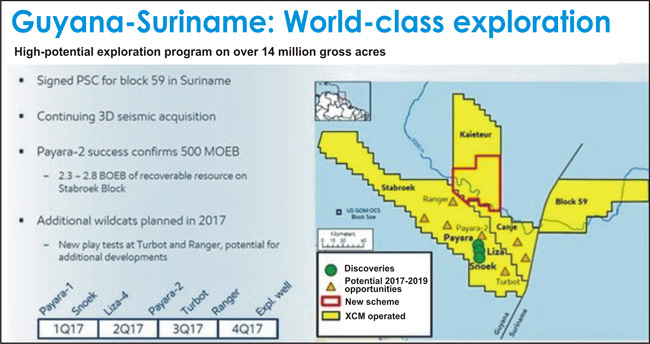Guyana’s oil likely to be ExxonMobil’s “cash cow” in coming years – Yahoo
Oct 18, 2017 , https://www.kaieteurnewsonline...-coming-years-yahoo/
 Chart showing Exxon-operated offshore exploration blocks in the Guyana Basin (Yahoo Photo)
Chart showing Exxon-operated offshore exploration blocks in the Guyana Basin (Yahoo Photo)
Guyana is no small fish in ExxonMobil’s pond. While the company has operations in over 50 countries around the world, it is the Guyana venture that is being deemed this big company’s proverbial “cash cow.”
